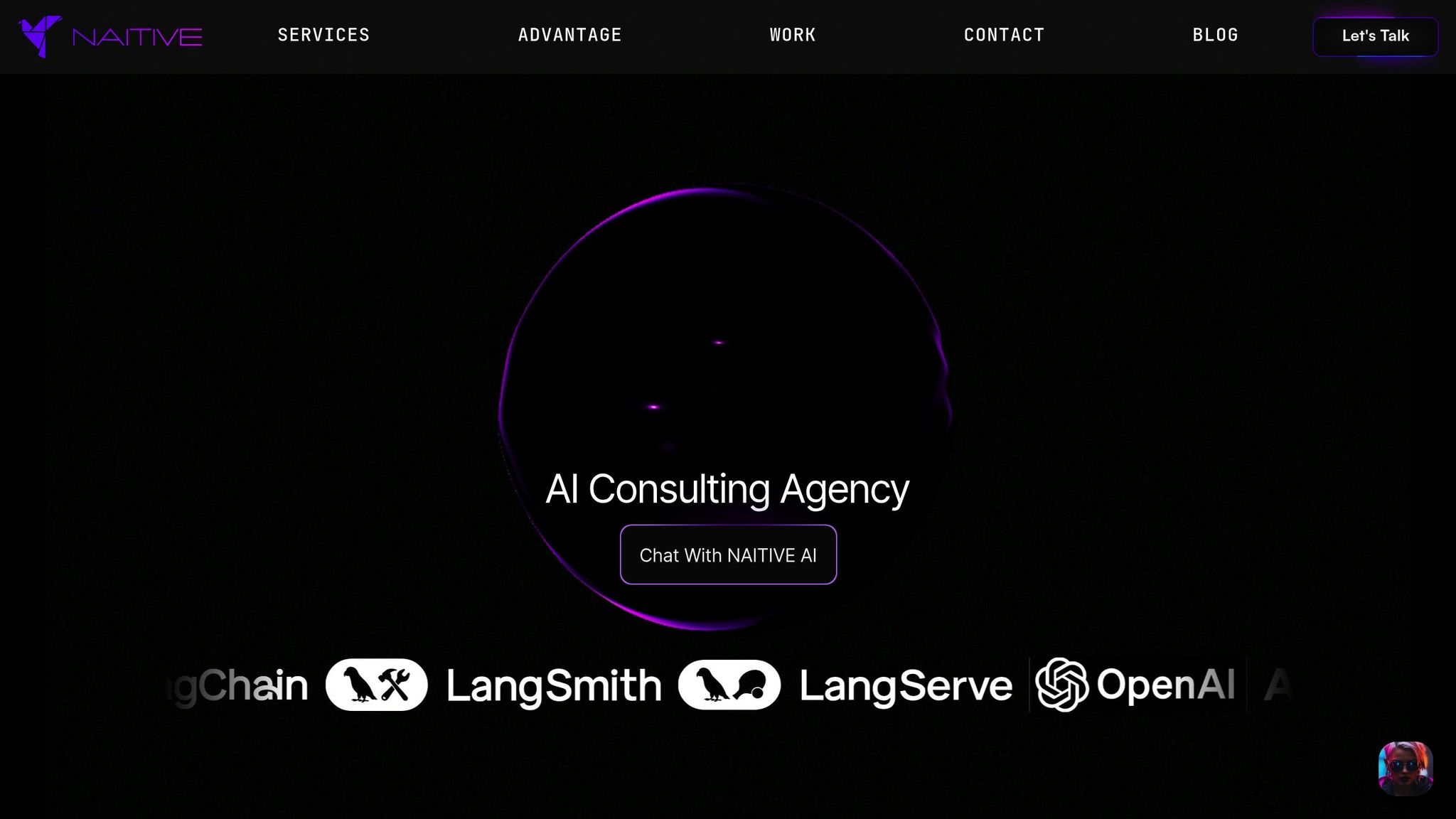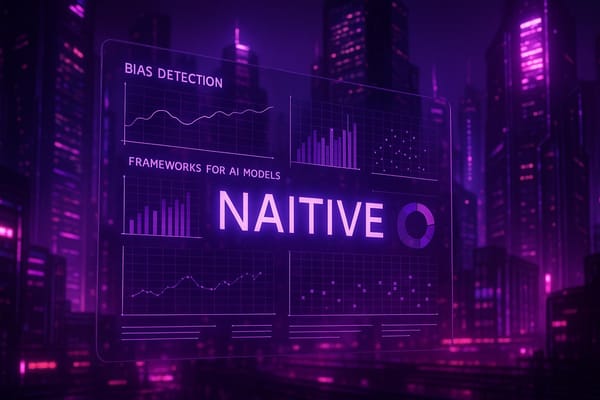Voice AI in Banking: 5 Case Studies
Explore how Voice AI is revolutionizing banking through enhanced customer support, security, and personalized services across various institutions.

Voice AI is changing how banks operate and interact with customers. By combining natural language processing (NLP) and voice biometrics, banks are improving service, security, and efficiency. Here’s what you need to know:
Key Takeaways:
- Customer Support: AI agents handle up to 77% of basic inquiries, reducing call center strain.
- Security: Voice biometrics enhance fraud detection and authentication.
- Personalization: AI tools offer tailored financial advice and proactive alerts.
- Savings: Banks save millions annually by automating routine tasks.
Case Studies:
- Bank of America (Erica): 32M users, 1B interactions, $328 monthly savings boost per user.
- Wells Fargo (Fargo): 34% customer retention growth, 77% of basic support automated.
- Capital One (Eno): Real-time fraud alerts, virtual cards for safer online shopping.
- Axis Bank (AXAA): Multilingual support, 270% increase in call handling capacity.
- JPMorgan Chase: Voiceprint authentication enhances security and speeds up processes.
Quick Comparison:
| Bank | AI Assistant | Key Features | Results |
|---|---|---|---|
| Bank of America | Erica | Account management, savings tips | 32M users, $328 avg. monthly savings |
| Wells Fargo | Fargo | Multi-channel support | 34% retention growth, 77% inquiry handling |
| Capital One | Eno | Fraud detection, virtual cards | Reduced fraud, better subscription tracking |
| Axis Bank | AXAA | Multilingual support | 270% call capacity increase, 90% accuracy |
| JPMorgan Chase | Voice System | Biometric authentication | Faster processes, improved fraud detection |
Voice AI is expected to handle 80% of transactions by 2030, making banking faster, safer, and more accessible. Keep reading for detailed insights into these case studies and how Voice AI is shaping the future of banking.
How HSBC is using conversational AI with Andy Kingston | VUX World
Bank of America: Erica Assistant Implementation

In 2018, Bank of America introduced Erica, the first widely available AI-powered virtual financial assistant in U.S. banking. This launch marked a major step forward in transforming both customer service and digital banking experiences.
Setup Process
Bank of America invested $300 million to bring Erica to life, focusing on three main areas:
- Mobile Integration: Embedding Erica seamlessly into the bank's mobile app for easy access.
- System Connectivity: Creating secure links with core banking systems to ensure smooth operations.
- AI Training: Using advanced algorithms to analyze behavior and deliver personalized responses.
The rollout followed a phased approach, starting with core features and gradually expanding its capabilities based on user feedback. These steps were essential to building Erica's functionality and reliability.
Main Functions
Erica uses predictive analytics and natural language processing to provide a range of services, including:
- Account Management: Real-time updates on balances, transaction histories, and spending habits.
- Financial Planning: Tailored savings suggestions and timely bill payment reminders.
- Security: Alerts for potential fraud and notifications about unusual account activity.
- Customer Support: Help with card controls, dispute resolution, and reward program queries.
Results and Insights
Erica's impact quickly became evident through improved customer interactions and operational efficiency.
During the COVID-19 pandemic, Erica played a critical role by assisting over 350,000 customers with Paycheck Protection Program (PPP) applications and loan forgiveness, reducing call center traffic by 45%.
Other key achievements include:
- Rapid Adoption: Gained 1 million users within just two months of its launch.
- Sustained Growth: By 2023, Erica had 32 million active users.
- High Engagement: Facilitated over 1 billion client interactions.
- Customer Satisfaction: 77% of users described their experience as "very satisfied."
In October 2021, Erica's proactive savings tips boosted average monthly savings by $328. Additionally, its March 2023 integration with the Preferred Rewards program led to a 28% increase in reward redemptions and a 15% drop in customer service inquiries about rewards.
These results highlight Erica's growing role in enhancing both customer satisfaction and operational efficiency.
Wells Fargo: Fargo Assistant Analysis

As part of our five-case study series, and following Bank of America's success with Voice AI, Wells Fargo has stepped into the spotlight with its own AI-powered solution. The Fargo AI assistant is designed to simplify customer transaction support across various platforms.
Setup Process
Wells Fargo prioritized smooth integration and top-notch security during the rollout of Fargo. The setup included:
- Multi-channel availability: Fargo was deployed across mobile apps, web platforms, and SMS, ensuring a consistent voice-activated experience for users.
- Secure integration: The system seamlessly connected to Wells Fargo's existing infrastructure to maintain data safety.
Main Functions
The Fargo AI assistant takes on routine customer interactions, answering common questions and managing support tasks. Thanks to its natural language processing abilities, Fargo can understand and respond to more complex queries. This allows it to handle repetitive requests while freeing up human agents to tackle more intricate issues. The result? A boost in operational efficiency and a smoother customer experience.
Results and Insights
The outcomes of Fargo's implementation are impressive. Customer retention has jumped by 34%, and the AI now handles 77% of level 1–2 support queries. Additionally, it manages 26% of contact center interactions, allowing human agents to focus on more challenging cases. These results highlight the growing role of voice AI in reshaping the banking industry.
Capital One: Eno Assistant Review

Capital One's AI-powered assistant, Eno, is changing the way customers interact with digital banking. By combining natural language processing (NLP), machine learning, and voice biometrics, Eno helps prevent fraud and enhances customer service.
Setup Process
Capital One designed Eno with a focus on security, efficiency, and user convenience. Key steps in its implementation included:
- Using advanced NLP to understand and respond to complex customer queries.
- Integrating with credit monitoring tools for real-time analysis and fraud prevention.
- Employing voice biometrics to verify users through their unique voice patterns.
- Ensuring fast responses while safeguarding data with strong encryption protocols.
Main Functions
Eno packs several powerful features, all aimed at improving security and simplifying banking:
- Virtual Card Generation: Creates unique card numbers for online purchases, minimizing the risk of fraud.
- Subscription Tracking: Keeps tabs on recurring payments, helping users manage subscriptions and avoid surprise charges.
- Voice Authentication: Verifies identity by analyzing voice patterns, adding an extra layer of security.
- Real-time Alerts: Notifies users instantly about suspicious activity, enabling quicker action to protect accounts.
| Feature | Description | Impact |
|---|---|---|
| Virtual Cards | Generates unique numbers for online purchases | Reduces exposure to fraud |
| Subscription Tracking | Monitors recurring payments | Helps avoid unwanted charges |
| Voice Authentication | Uses voice patterns for identity verification | Strengthens account security |
| Real-time Alerts | Sends instant notifications of suspicious activity | Speeds up fraud response |
These tools work together to provide a smoother, safer banking experience while giving customers greater control over their finances.
Results and Insights
Since its introduction, Eno has made a noticeable impact. Virtual cards have significantly reduced fraudulent transactions, while real-time alerts have improved early fraud detection and response times. Additionally, customers are engaging more with the platform, drawn by its user-friendly features and focus on security. Eno's success highlights the potential of combining voice AI with advanced security measures to create a banking experience that’s both efficient and secure.
Axis Bank: AXAA Multilingual System

Axis Bank's AXAA (Axis Automated AI Assistant) represents a significant leap in multilingual voice AI for banking. Introduced in collaboration with Vernacular.ai (now Skit.ai) in 2020, AXAA redefined customer service delivery across India's linguistically diverse population. Much like previous U.S. implementations, AXAA highlights the potential of voice AI to transform banking experiences in varied environments.
Setup Process
The rollout of AXAA followed a carefully planned, phased approach to ensure language accessibility and scalability:
| Phase | Focus Area | Timeline |
|---|---|---|
| Initial Development | Building language models and system integration | Q1 2020 |
| Testing & Validation | Conducting trials with a limited customer base | Q2 2020 |
| Scale-up | Expanding infrastructure and enabling remote deployment | Q3–Q4 2020 |
| Full Deployment | Launching multilingual support and fine-tuning | 2021 |
Axis Bank's partnership with Vernacular.ai enabled the rapid creation of tailored acoustic models for various Indian languages. At the same time, the system adhered to strict security protocols and regulatory requirements. This approach addressed challenges like regional accents and mixed-language conversations, ensuring smooth and accurate communication.
Main Functions
AXAA provides much more than basic banking services, offering a wide range of features in multiple languages:
| Service Category | Features | Languages Supported |
|---|---|---|
| Account Services | Balance checks, money transfers, account statements | 8+ Indian languages |
| Credit Services | Credit card management, EMI details | All major Indian languages |
| Advisory Services | Investment advice, loan-related information | Regional language options |
| Location Services | ATM/Branch locator, operating hours | Vernacular support |
With advanced natural language processing, AXAA can manage complex queries and even maintain conversational context when switching between languages.
Results and Insights
During the height of the pandemic, AXAA delivered impressive results, including a 270% boost in call handling capacity, a 50% reduction in resolution time, and a 35% rise in customer satisfaction among non-English speakers. Some key metrics include:
- $3.2 million saved annually in call center costs
- 65% of routine queries resolved without human intervention
- 90% accuracy in understanding regional accents and dialects
- 40% growth in market reach within tier-2 and tier-3 cities
AXAA’s ability to handle multilingual interactions provided critical insights:
-
Language Preferences and Engagement
Over 60% of customers in non-metro areas preferred conducting banking activities in their local language, which encouraged them to explore services more actively. -
Cultural Comfort with Financial Discussions
Customers were more willing to discuss sensitive financial topics when assisted in their native language. -
Improved Digital Adoption
Voice authentication gained traction, particularly among older and rural populations, when instructions were provided in their native tongue.
These findings have laid the groundwork for future implementation strategies.
JPMorgan Chase: Voice Security System

JPMorgan Chase has introduced biometric authentication using individualized voiceprints. This advanced voice security system, powered by neural networks, identifies customers based on their unique voice characteristics.
Setup Process
Developing this system required close collaboration between IT teams and cybersecurity experts. The goal was to ensure it seamlessly integrated with the bank's existing call center platforms while meeting strict regulatory standards. The technology analyzes over 100 unique physical and behavioral traits in each customer's voice. Extensive training and fine-tuning have enhanced its ability to recognize voices and detect anomalies with high accuracy.
These efforts laid the groundwork for the system’s three main capabilities.
Main Functions
The voice security system delivers its benefits through three key functions:
| Function | Capability | Security Level |
|---|---|---|
| Real-time Authentication | Instantly verifies voices against registered voiceprints | Strong multi-factor security |
| Fraud Detection | Continuously analyzes voice patterns for anomalies | Ongoing real-time monitoring |
| Immediate Fraud Alerts | Flags suspicious activity and potential threats | Enables quick responses |
When a customer interacts with the system, they’re prompted to speak a specific phrase. The system compares this input to the registered voiceprint, significantly speeding up the authentication process.
Results and Insights
The implementation of this voice security system has led to measurable benefits across operations, security, and customer satisfaction:
-
Operational Efficiency
Automated voice authentication has reduced call handling times, allowing customer service representatives to focus on more complex inquiries. -
Enhanced Security
By leveraging unique voiceprints, the system has minimized unauthorized access attempts, offering a stronger layer of protection. -
Improved Customer Experience
Customers now enjoy a faster and more secure process without the hassle of answering traditional security questions, boosting overall satisfaction.
Looking ahead, with forecasts suggesting that voice assistants could manage up to 80% of customer transactions by 2030, JPMorgan Chase is working to expand voice authentication to additional digital platforms while maintaining stringent security protocols.
Implementation Guidelines
Building on the case studies above, successfully deploying Voice AI in banking requires a strong foundation of technical, security, and compliance protocols.
Key Requirements
Effective Voice AI implementation relies on three critical pillars:
| Requirement | Description | Impact |
|---|---|---|
| Technical Infrastructure | Robust servers, network capacity, and redundant systems | Ensures 99.9% uptime and real-time processing |
| Data Security | Encryption, secure storage, and access controls | Safeguards customer data and builds trust |
| Integration Capability | APIs for banking, CRM, and authentication systems | Enables seamless cross-system operations |
Additionally, systems need to handle a wide range of accents and dialects with precision.
Compliance Requirements
For financial institutions, adhering to regulatory standards is non-negotiable:
- Biometric Data Protection: Voice patterns require explicit consent as outlined by GDPR.
- Data Storage Rules: Voice recordings must be stored in approved jurisdictions.
- Authentication Standards: Multi-factor authentication should complement voice verification for secure access.
- Audit Trail Maintenance: All voice interactions should be documented for compliance reviews.
To meet ADA requirements, systems must also provide alternative authentication methods for customers with speech impairments, ensuring inclusivity.
These compliance measures pave the way for tailored, well-regulated solutions, such as those provided by NAITIVE AI Consulting Agency.
NAITIVE AI Services

NAITIVE AI specializes in creating autonomous voice agents that drive tangible results.
Their approach includes:
- Discovery: Evaluating current systems to pinpoint integration opportunities.
- Solution Design: Developing custom Voice AI solutions tailored to banking needs.
- Implementation: Delivering proven results in efficiency and customer engagement.
"The AI Agent NAITIVE designed now manages 77% of our L1-L2 client support" - Sarah Johnson, CXO
Their results speak volumes:
- Customer retention growth: 34%
- Improved conversion rates: 41%
- Daily AI agent outbound calls: 200
With these guidelines in place, banks can confidently move forward, ready to explore new applications of Voice AI in their operations.
Voice AI Banking Outlook
Voice AI is poised to significantly reshape the banking sector, building on its proven successes to deliver even more transformative services. By 2030, it's estimated that voice assistants will handle 80% of customer transactions, signaling a major shift in how financial institutions interact with their clients. This evolution isn't just about solving today's challenges - it's about unlocking new possibilities for the future.
New Applications
Voice AI is already driving exciting advancements in banking, with several key applications leading the way:
Advanced Financial Coaching: Modern Voice AI systems can now analyze spending habits and market trends to provide tailored financial advice in real time. These systems engage customers in natural, conversational ways, making financial guidance more accessible and actionable.
Predictive Services: Voice AI is evolving into a proactive financial advisor, offering services such as:
- Identifying potential cash flow issues early
- Recommending refinancing options when interest rates improve
- Suggesting timely investment adjustments
These predictive capabilities also create opportunities to enhance security measures.
Enhanced Security: Voice biometrics are transforming authentication processes, adapting to meet future security demands. Here’s how:
| Security Feature | Function | Impact |
|---|---|---|
| Continuous Authentication | Verifies identity throughout interactions | Reduces fraud attempts |
| Multi-Factor Voice Analysis | Combines voice patterns with behavior cues | Strengthens security |
| Layered Biometrics | Integrates with facial and fingerprint data | Provides comprehensive protection |
Ecosystem Integration: Voice banking is expanding far beyond traditional services, connecting seamlessly with:
- Investment platforms
- Insurance tools
- Retirement planning resources
- Smart home devices
- Automotive systems
This broader integration allows Voice AI to become a key player in a growing digital ecosystem, enhancing convenience and functionality.
Implementation Tips
For banks looking to adopt Voice AI, careful planning is essential to maximize its potential. Here are some critical areas to focus on:
Technical Foundation: A strong infrastructure is crucial. Banks must ensure accurate, real-time voice recognition that integrates smoothly with existing systems and can scale through cloud-based solutions.
Accessibility Focus: Inclusivity should be a priority during implementation. Here’s how Voice AI can address diverse user needs:
| User Group | Consideration | Solution |
|---|---|---|
| Elderly Customers | Limited digital literacy | Simple voice commands |
| Rural Communities | Limited branch access | Mobile voice banking |
| Non-Native Speakers | Language barriers | Multilingual support |
| Disabled Users | Physical limitations | Voice-first interfaces |
Measurement Framework: Success should be tracked using clear metrics to evaluate performance and impact, such as:
- Customer adoption rates
- Satisfaction with voice interactions
- Automated resolution effectiveness
- Cost savings from reduced call center reliance
- Security improvements through fraud detection
A phased approach is recommended for implementation. Start with high-impact use cases, gather user feedback, and expand gradually. This ensures a balance between innovation, service quality, and security, paving the way for long-term success.
Summary
Voice AI is reshaping banking, delivering better operations and enhanced customer experiences. Its ability to reduce call center traffic and provide 24/7 account access has made a noticeable impact. On top of that, voice biometric authentication has added a layer of security, replacing traditional passwords and security questions.
The case studies highlight three key factors behind its success:
Security Integration: Advanced biometrics and real-time fraud detection are now essential for secure yet accessible banking. For instance, JPMorgan Chase's voice security system seamlessly blends these capabilities with traditional banking practices.
Operational Efficiency: Automating routine tasks has cut costs and expanded digital services. Voice assistants are expected to handle 80% of customer transactions by 2030, making operations smoother and more efficient.
Customer Experience: Banks are using voice-enabled services for everything from simple account inquiries to complex financial advice. Systems like Axis Bank's AXAA, with its multilingual features, have made banking easier for a wider range of customers.
| Implementation Aspect | Current Impact | Future Potential |
|---|---|---|
| Service Efficiency | 24/7 instant access | Advanced financial coaching |
| Advanced Security | Biometric authentication | Enhanced fraud detection |
| Process Optimization | Reduced operational costs | AI-driven automation |
| Service Range | Basic transactions | Complex financial advisory |
To succeed with Voice AI, banks need to balance automation with human support and have clear escalation paths for more complicated issues. While the technology thrives on managing routine, high-volume tasks, it allows human agents to focus on solving more intricate customer problems.
Looking ahead, the market for Voice AI in banking is expected to grow to $47.5 billion by 2034. This expansion will likely bring more advanced features, such as predictive banking and personalized financial advice, transforming the way customers interact with their banks.
FAQs
How does Voice AI improve security in banking compared to traditional methods?
Voice AI is transforming banking security by leveraging advanced voice recognition technology. By analyzing unique vocal traits, it verifies a customer's identity, offering an extra layer of protection that goes beyond traditional methods like PINs or passwords - both of which can be easily forgotten or stolen.
What makes this even more effective is Voice AI's ability to spot irregularities in speech patterns or behaviors. This means potential fraud attempts can be flagged in real-time, making security not just stronger but also more intuitive and user-friendly for customers.
What challenges might banks encounter when implementing multilingual Voice AI systems?
Challenges of Implementing Multilingual Voice AI in Banking
Rolling out multilingual Voice AI systems in the banking sector isn't without its hurdles. One of the biggest challenges lies in ensuring language accuracy and sensitivity to cultural nuances. These systems need to do more than just recognize different languages - they must also handle regional accents, dialects, and culturally specific expressions. Without this level of precision, the customer experience can feel impersonal or even frustrating.
Another critical issue is data privacy and compliance. Banks must navigate strict regulations like the Gramm-Leach-Bliley Act (GLBA) and other regional privacy laws. These rules can differ significantly based on the country or language in question, adding layers of complexity to Voice AI deployment.
Lastly, there’s the matter of technical integration. Voice AI systems must seamlessly connect with existing banking infrastructure, such as customer databases and transaction platforms. At the same time, they need to scale efficiently and maintain reliable performance across multiple languages. Balancing these technical demands is no small feat.
How will Voice AI transform customer interactions with banks by 2030?
Voice AI is set to transform how people interact with banks by 2030, making banking faster, more personalized, and easier to access. Imagine using voice-powered virtual assistants to check your account balance, transfer money, or even apply for a loan - all through simple, natural conversations.
It doesn’t stop there. This technology could completely change customer service by providing round-the-clock support, cutting down on wait times, and simplifying even the most complex questions. As AI continues to improve, banks might use voice technology to better understand individual needs, offer customized financial advice, and deliver secure, hands-free options for managing finances. The move toward voice-driven banking aims to make financial services more streamlined and centered around the customer.




